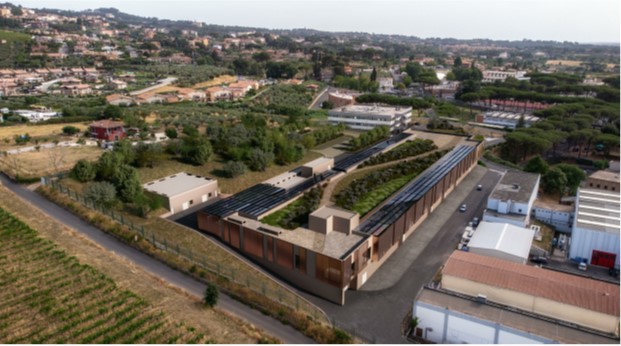EuPRAXIA is the first European project that develops a dedicated particle accelerator research infrastructure based on novel plasma acceleration concepts and laser technology.
The European plasma accelerator community has received a major impulse for the development of a user-ready plasma accelerator facility with the funding of several multi-million euro initiatives under the umbrella of the EuPRAXIA project. These are EuPRAXIA Preparatory Phase, EuPRAXIA Doctoral Network, and EuPRAXIA Advanced Photon Sources, as well as funding for the construction of one of the sites of EuPRAXIA in Frascati, near Rome.
The EuPRAXIA project aims at the construction of an innovative electron accelerator using laser- and electron-beam-driven plasma wakefield acceleration that offers a significant reduction in size and possible savings in cost over current state-of-the-art radiofrequency-based accelerators.

The EuPRAXIA project started with a Design Study, which was funded under the EU Horizon 2020 programme, and culminated at the end of 2019 with the publication of the worldwide first Conceptual Design Report for a plasma accelerator facility. EuPRAXIA was then included in 2021 in the European Strategy Forum on Research Infrastructures (ESFRI) Roadmap, which identifies those research facilities of pan-European importance that correspond to the long-term needs of the European research communities.
Now the EU, the Swiss State Secretariat for Education, Research and Innovation and the UK Research and Innovation Guarantee Funds have awarded 3.69 M€ to the EuPRAXIA Preparatory Phase (PP), which comprises 34 participating institutes from Italy, Czech Republic, France, Germany, Greece, Hungary, Israel, Portugal, Spain, Switzerland, United Kingdom, USA and CERN as International Organization.
The Cockcroft Institute is heavily involved in EuPRAXIA-PP through STFC and the universities of Liverpool and Strathclyde. STFC will participate in the design of RF, magnets and beamline components, as well as diagnostics, and it will contribute to the development of applications for the user areas. The University of Strathclyde will lead a work package to develop innovative, high gain concepts with possibly transformative potential like the hybrid laser/plasma wakefield acceleration scheme. The University of Liverpool will lead the dissemination and public relations efforts in order to build a favourable background for EuPRAXIA to pursue implementation and operation.
Alongside EuPRAXIA-PP, a new Marie Skłodowska-Curie Actions Doctoral Network (EuPRAXIA-DN), coordinated by Prof Carsten Welsch through INFN – Italian National Institute for Nuclear Physics, has also been funded by the EU and the UKRI Guarantee Funds. EuPRAXIA-DN will offer twelve high-level fellowships between universities, research centres and industry that will carry out an interdisciplinary and cross-sector plasma accelerator research and training program. The network will start in January 2023 and benefit from more than 3.2 M€ of funding over its four-year duration.
EuPRAXIA-DN will focus on scientific and technical innovations and on boosting the career prospects of its Fellows. The project comprises a lot of the European expertise in this research area and involves ten universities, six national and international research centres, as well as seven partners from industry at project start.
Finally, the Italian Ministry of Universities and Research is supporting through the Next Generation EU recovery funds (PNRR) the EuPRAXIA Advanced Photon Sources project (EuAPS) with 22 M€. The project has been promoted by INFN (leading institution), CNR – Italian National Research Council, and Tor Vergata University of Rome.
EuAPS will fulfil some of the scientific goals defined in the EuPRAXIA Conceptual Design Report by building and commissioning a distributed user facility providing users with advanced photon sources; these consist of a plasma based betatron source delivering partially coherent soft X-rays, a mid-power, high repetition rate laser, and a high power laser.
The above mentioned funding comes in addition to about 120 M€ funding for construction of the beam-driven pillar of EuPRAXIA at Frascati, close to Rome, provided by Italian government, the Latium region and INFN. Research and development activities for the beam-driven facility are currently being performed at the INFN SPARC_LAB laboratory in Frascati. The European site for the second, laser-driven leg of EuPRAXIA will be decided in June 2024 as part of the Preparatory Phase project.
The coordinator of the EuPRAXIA consortium, Dr Ralph Assmann, senior research associate at INFN and Leading Scientist for Accelerator R&D at DESY, says: “This additional success for our accelerator field has been achieved thanks to the excellence, ingenuity and hard work of several hundreds of physicists, engineers, students and support staff, who worked on EuPRAXIA since 2015, connecting 50 institutes and industries from 15 countries in Europe, Asia and the United States.”
article updated 30/11/2022
